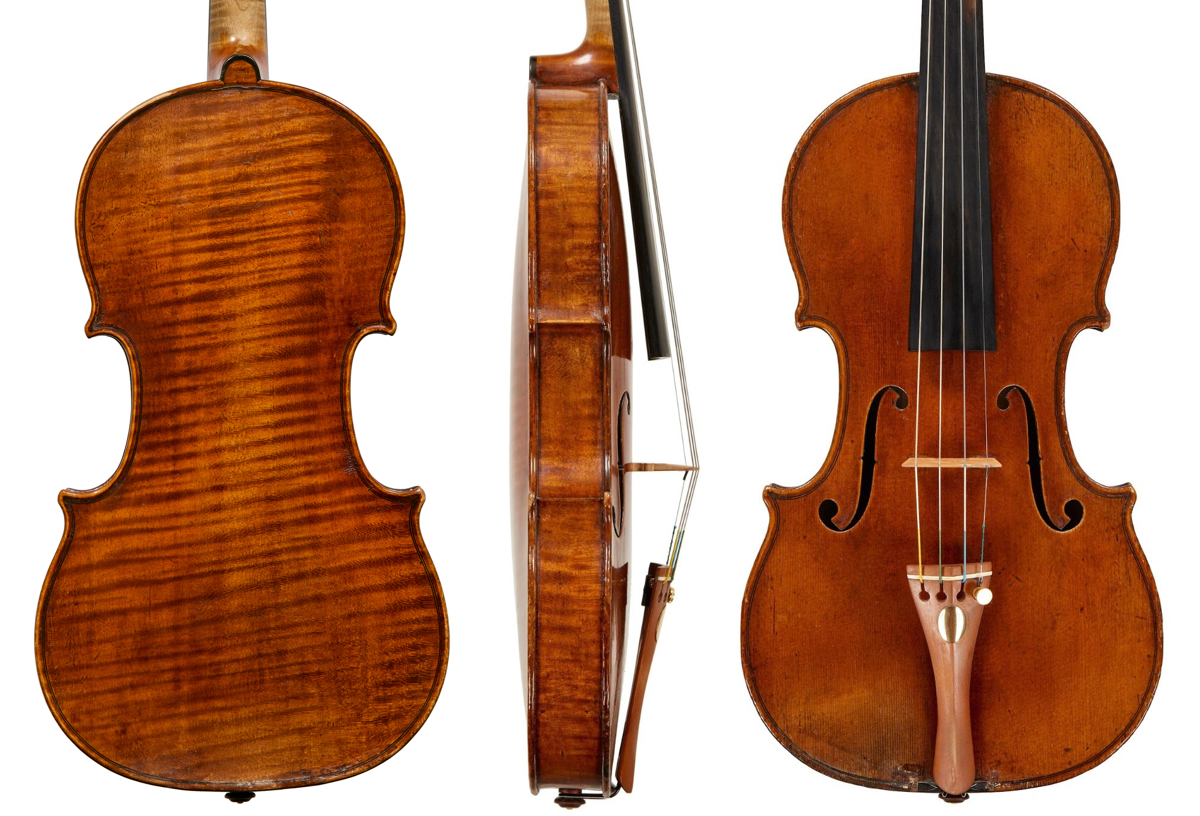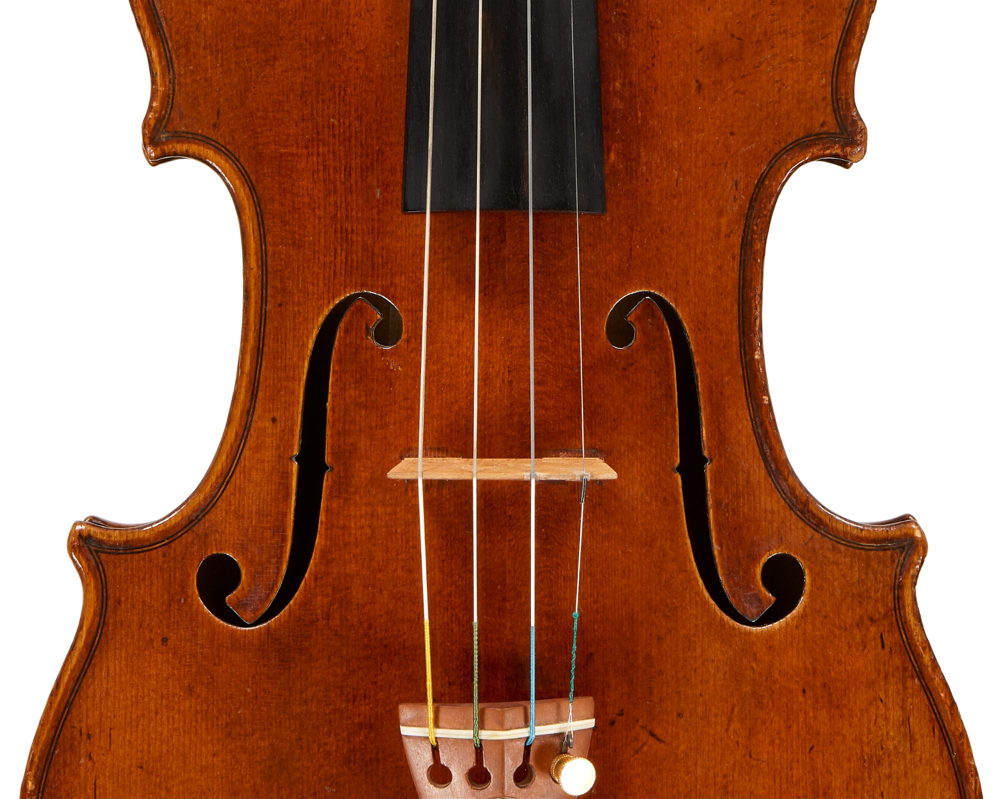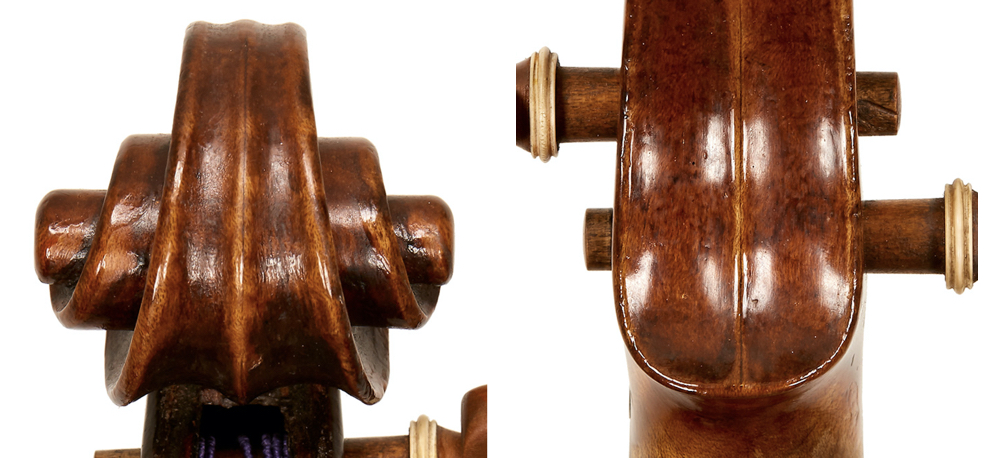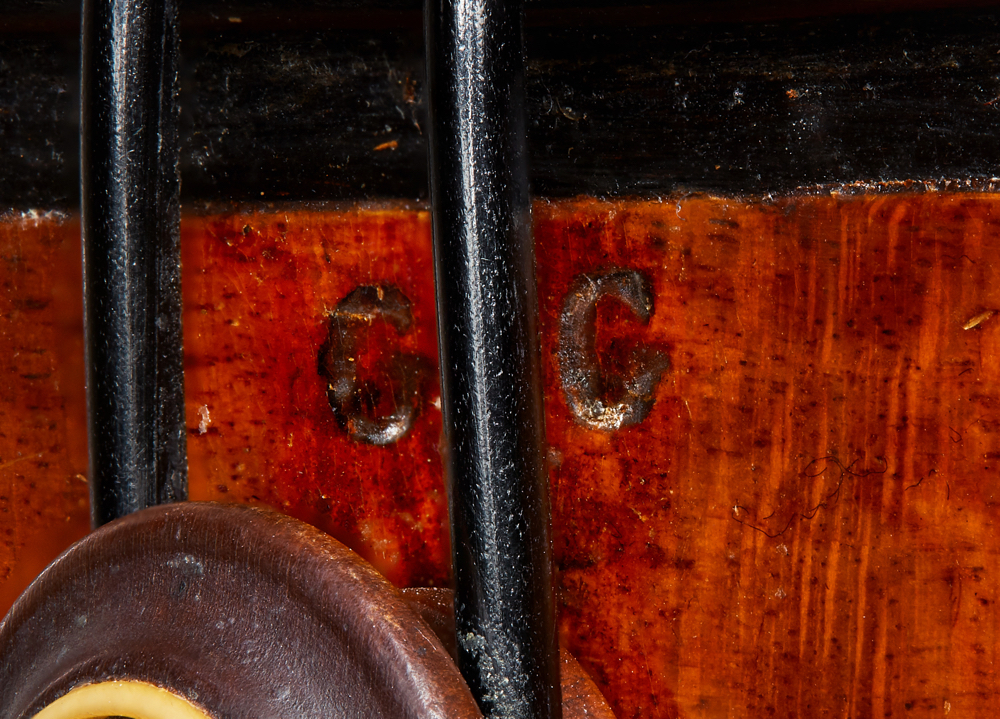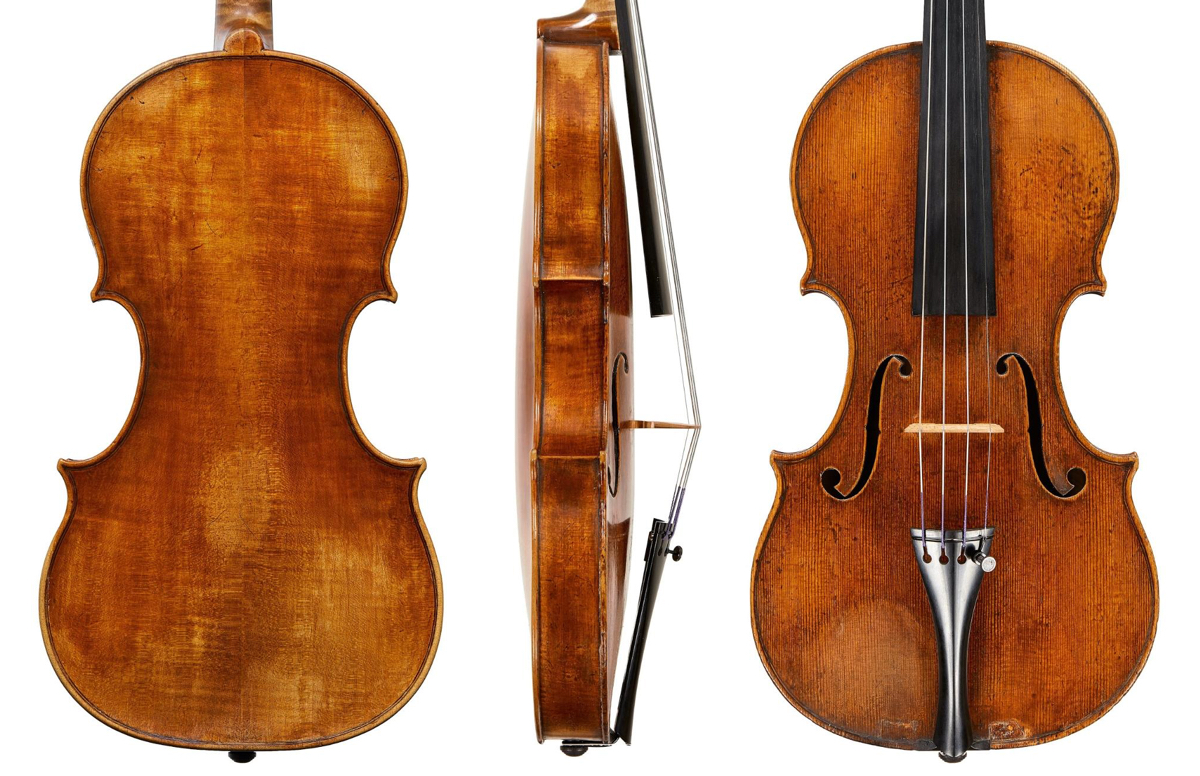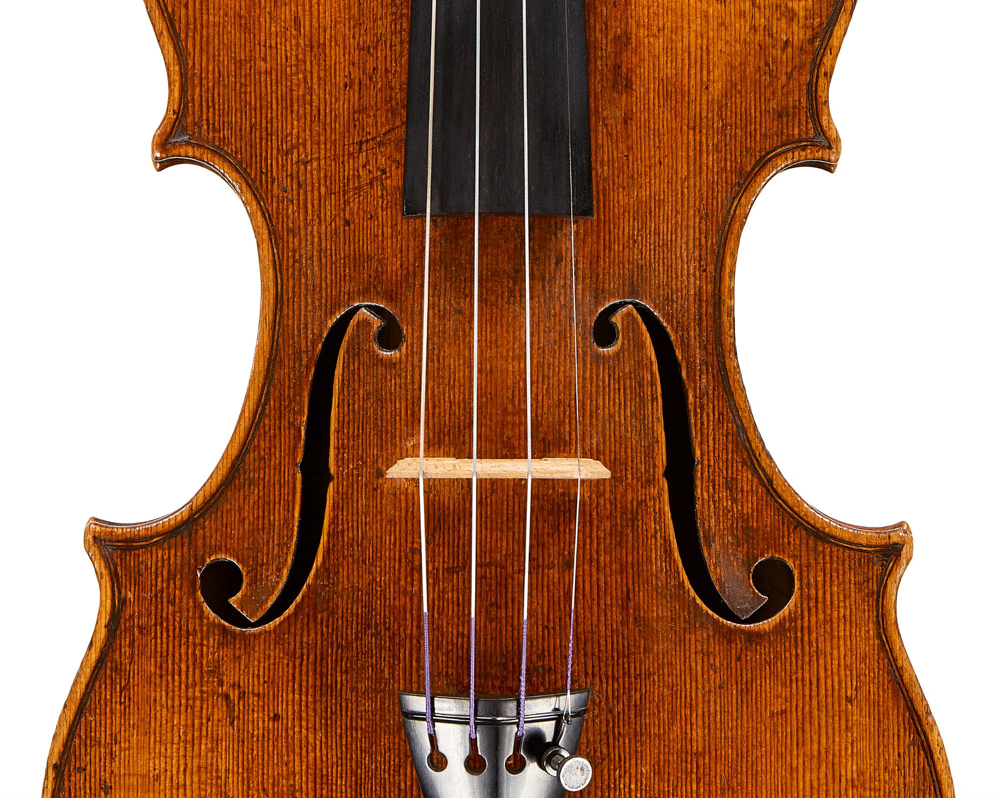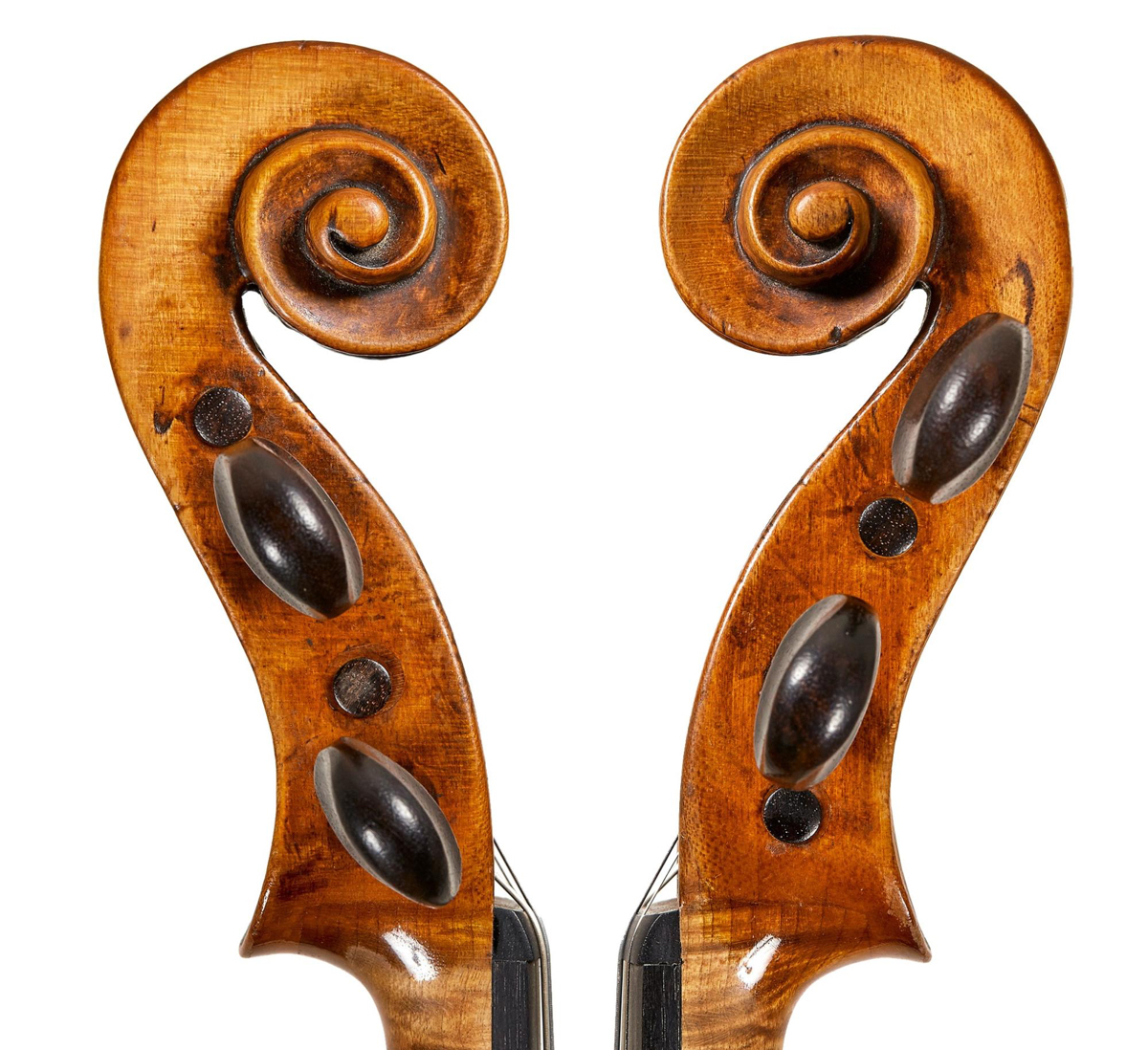Generally considered to be the premier violin maker of the modern Turin school, Giovanni Francesco Pressenda arrived in Turin in the 1810s, where he learned the trade in the workshop of Nicolas Lété. His work is known for its precision and regularity, which contrasted greatly with violin making happening elsewhere in Italy in the 19th century. This example dates from relatively late in his career.
A fine Italian violin by Giovanni Francesco Pressenda, Turin, 1842
Pressenda favored one-piece backs and used well-flamed, attractive maple and fine-grained spruce. His model was generally Stradivarian in concept with a strong French influence, particularly in his early work. His instruments from the 1820s are slightly less refined, with thicker edges, wider purfling and rounder, higher arching. From the mid-30s his model varied little.
Pressenda’s long soundholes are easily recognizable and can be interpreted as a stylized version of a late-1720s Stradivari. The notches are wider and deeper in his early instruments and gradually become smaller over the course of his career. The upper and lower soundhole wings are nearly the same size. The purfling is narrow and precise in his mature work and invariably in beech.
Pressenda’s varnish is a characteristic thick reddish-brown. It has a tendency to coagulate into a light craquel and remains soft and plastic even after nearly two centuries of use.
The pigmented layer of varnish often penetrates the ground. On maple this accentuates the figure but on spruce, particularly where end-grain is exposed, the result is a grain reversal and ‘staining’ in the white summer grains.
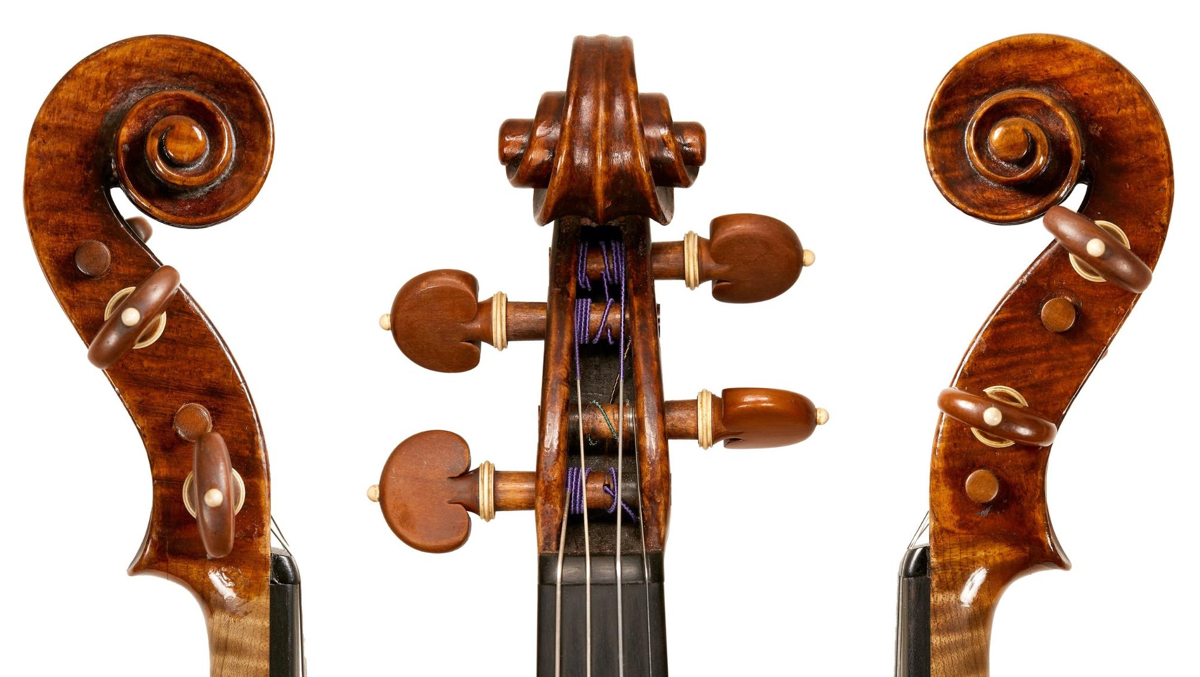
The slightly oversized volute of the scroll is accentuated by the slender pegbox. Photos: Tarisio
More photosPressenda’s early scrolls have a large and clumsy eye. By 1840 the eye is smaller but the volute is still slightly oversized, a feature that is emphasized by the slender pegbox.
The characteristic scribe-line is filled with varnish. The symmetrical turns of the head are Stradivarian in concept but the fluting is deeper than on a Strad, particularly under the chin.
This instrument is branded ‘G G’ to the lower rib, which was previously thought to indicate an association with Gaetano Guadagnini. My colleague Philip Kass, who sold this violin while at Moennig, has pointed out that we now know conclusively that Gaetano Guadagnini died in 1840 and suggested that the brand might possibly be a reference to the Turin violinist Giuseppe Ghebart, who was the pupil of Giovanni Battista Polledro.
A fine Italian violin by Carlo Giuseppe Testore, Milan, c. 1700
Carlo Giuseppe Testore was the first of this industrious family of Milanese makers, as well as its finest craftsman. His early labels state that he was a pupil of Giovanni Grancino and his work shows a strong Grancino influence. Testore instruments generally have a characteristically low, Milanese-school arch and a distinctively shaped scroll.
Testore varnish tends towards reddish-brown. The model and low arching work well for modern playing.
The slanted soundholes are reminiscent of Grancino, but with larger upper and lower holes and slightly flared, hatchet-shaped wings. In many ways they prefigure the Guarneri-style soundholes that would emerge in Cremona in the 1710s and 20s. The deep and rounded C-bouts create curves of nearly equal radius on either side of the corners.
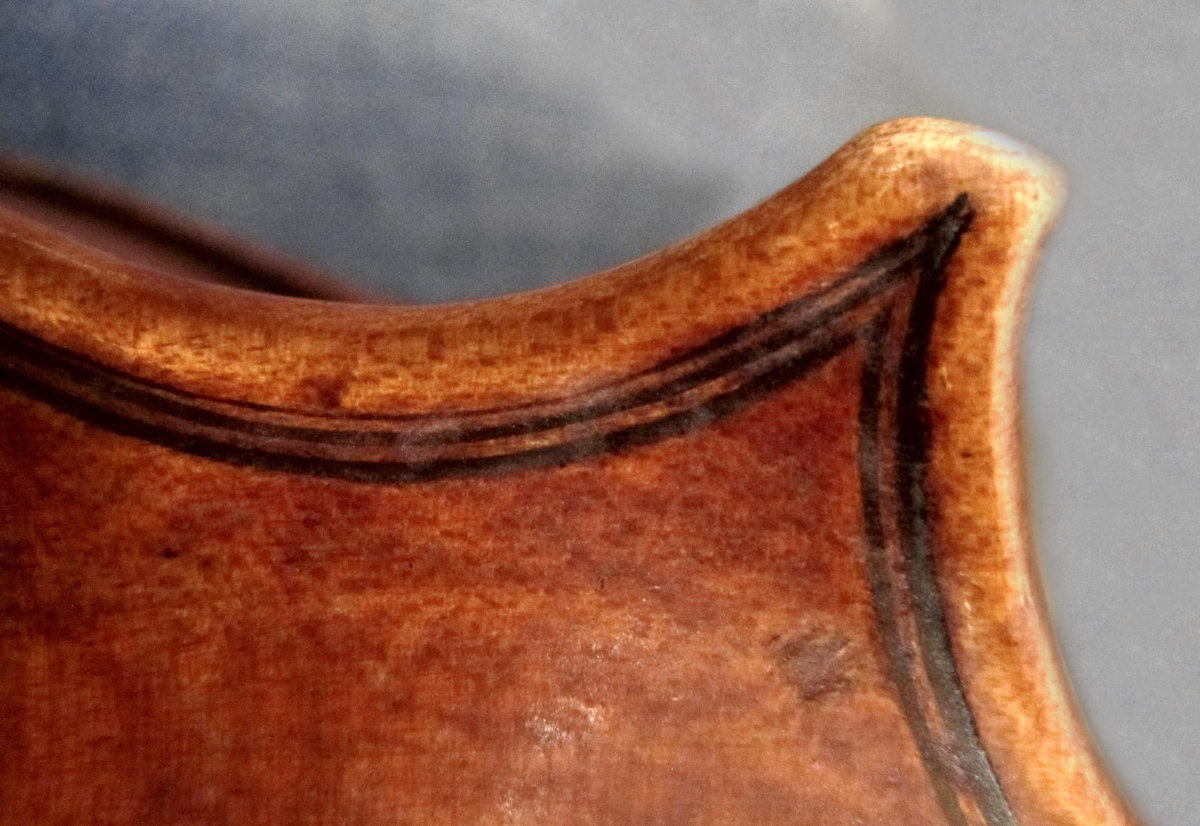
Remnants of the original scribe lines are visible in the lower treble corner. Photo: Tarisio
More photosMany Testore instruments were made with ‘scribed’ purfling on the back and traditional three-part purfling on the front. The two scribe lines visually reinforced the edge of the back but provided no structural support. Inlaying purfling into maple is more time consuming than spruce and the purfling arguably is more important on the front, where it bands the edge and prevents the table from splitting along the narrow spruce grains. On this instrument, like many others, the scribed purfling on the back was replaced with traditional purfling, probably in the 19th century. Remnants of the original scribe lines can be seen in the lower treble corner.
The typical egg-shaped Testore volute appears to droop forward, an effect which is accentuated by the diminutive eye.
The fluting stops short under the volute.
The slightly ‘potted’ second turn of the volute is prominent, sheathing the ears so they almost cannot be seen when viewed from the front. The center ridge between the two fluted halves is off-center at the chin. A tiny chamfer has softened with age.
Both the Pressenda and Testore violins are currently available in our New York November auction; bidding ends on November 7. View full catalog.
